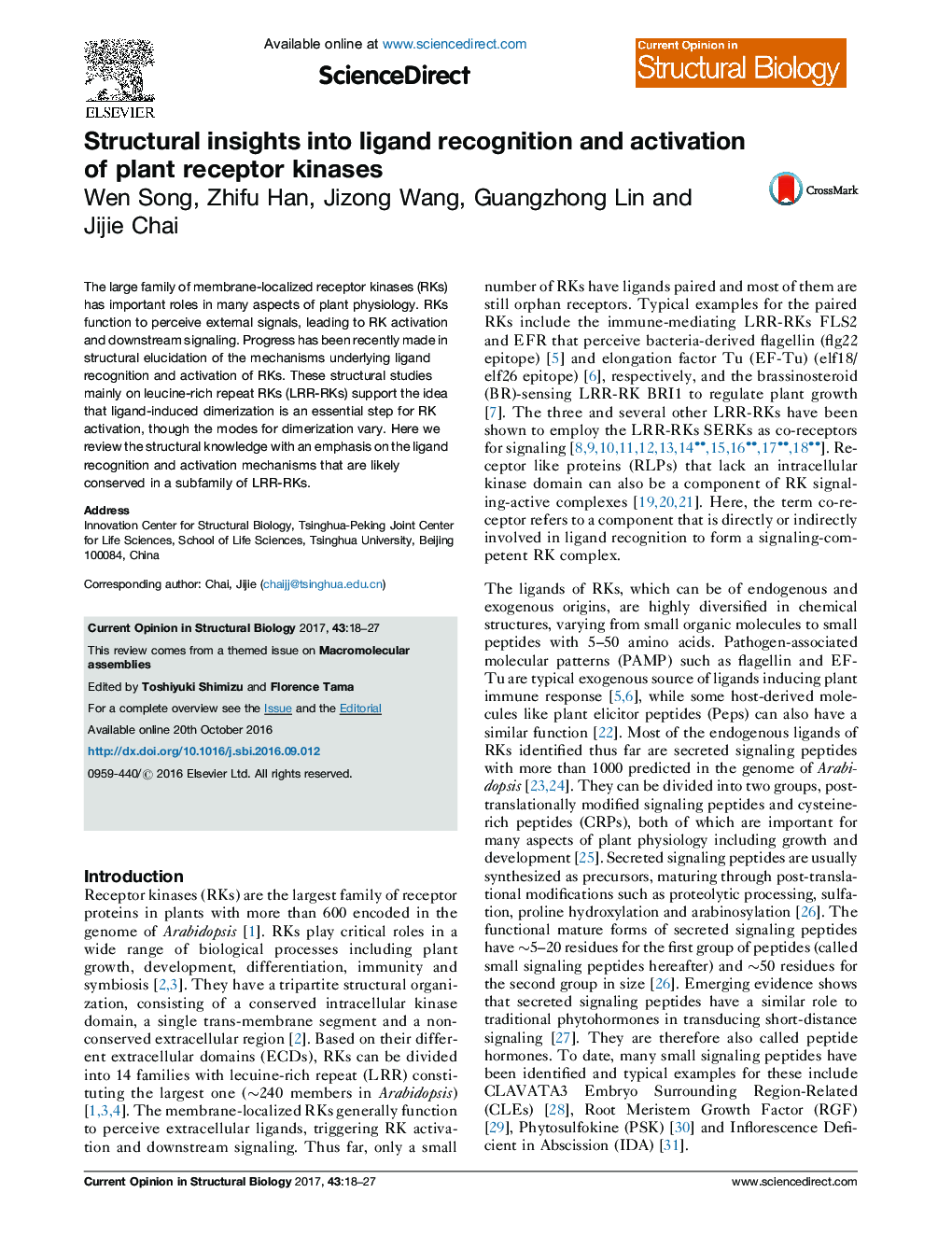| Article ID | Journal | Published Year | Pages | File Type |
|---|---|---|---|---|
| 5510787 | Current Opinion in Structural Biology | 2017 | 10 Pages |
â¢Ligand-induced dimerization is an essential step for RK activation.â¢RKs have varied modes for dimerization depending on their ligands.â¢Conserved mechanisms for receptor recognition and activation of small signaling peptides.
The large family of membrane-localized receptor kinases (RKs) has important roles in many aspects of plant physiology. RKs function to perceive external signals, leading to RK activation and downstream signaling. Progress has been recently made in structural elucidation of the mechanisms underlying ligand recognition and activation of RKs. These structural studies mainly on leucine-rich repeat RKs (LRR-RKs) support the idea that ligand-induced dimerization is an essential step for RK activation, though the modes for dimerization vary. Here we review the structural knowledge with an emphasis on the ligand recognition and activation mechanisms that are likely conserved in a subfamily of LRR-RKs.
